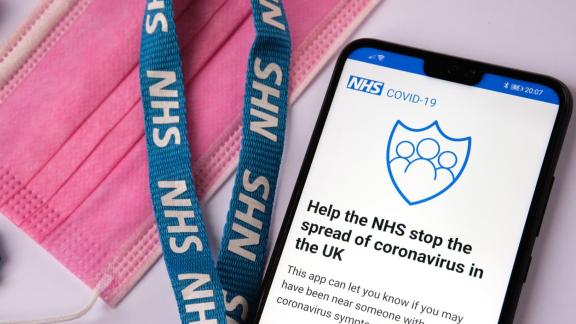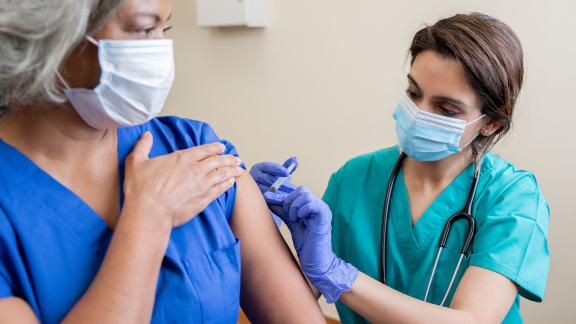Communicating in a pandemic

When we spoke to a cohort of 13 provider trust chief executives at the height of the pandemic, all of them emphasised the importance of communication at a time of crisis. All bar none had increased their engagement with staff, employing a range of different means to update, reassure and connect with colleagues across the organisation. Here, the head of internal communications and engagement at one of the UK's largest foundation trusts sheds light on how it ramped up engagement with its 12,000-strong workforce.
COVID-19 has impacted the way we all work in so many ways. Ensuring we are communicating effectively has been a challenging and thought-provoking experience, especially during the start of the first wave of the pandemic.
Since February 2020, King’s College Hospital NHS Foundation Trust has seen some of the highest numbers of COVID-19 cases through its doors. The way our 12,000-strong group of staff have coped and been so resilient during this time of crisis has been admirable. COVID-19 has hit the area of south-east London hard, and in communications at King’s, we have had to quickly adapt our existing channels, as well as introducing new approaches.
Almost overnight our hospitals’ estates changed, equipment was procured, policies and procedures were drafted and implemented, and staff were being redeployed into clinical areas, including into our critical care units. It was vital that our communication was clear, up to date and accessible.
Keeping it simple
To ensure information was located easily, we set up a dedicated area on our intranet which housed COVID-19 information only. This area included clinical guidance, workforce and HR information, as well as UK government updates. Authors were assigned to ensure information was consistent, and this area was made easily navigable from the homepage.
Alongside the set up of this area, we also introduced a daily CEO bulletin, which was well-received by staff and included key daily updates, as well as signposting to vital information.
Promoting good news
In communications, we were determined to remain optimistic and capture the voices from the frontline. We were hearing some incredible and moving stories from across our hospitals and we wanted to capture as many of these as possible. Being in the hospital setting throughout the pandemic, we were on-hand to interview staff and also film weekly staff films. These films were produced and delivered by the team and published every Friday throughout the pandemic. In total, we produced over 30 staff films, all of which featured a bespoke introduction from our chief executive.
This year has seen us use video as a method of communication more than ever. Alongside these films, we have also produced training videos, clips about infection prevention and messages of faith from our chaplaincy team. Interestingly, we can map our hospitals and their journey throughout COVID-19 with video footage and staff interviews. When the time is right, I hope that we can piece this video content together as one piece of film that we can share.
We also introduced a staff series called Hearing From You. This written series grew organically and featured interviews with both corporate and clinical staff from across the organisation at all levels.
One of the most moving interviews I did was with a midwife who talked through the emotional difficulties of delivering babies in full personal protective equipment. In the 12-week period from March, we published over 60 staff interviews on our intranet, our website and across social media, all of which gathered lots of positive feedback along the way.
These sorts of interviews and moments spent with staff, often just letting them talk unprompted by any questions, will stay with me for the rest of my life.
Rapidly launching
We knew from very early on into the pandemic that our current intranet had its limitations, as it was only accessible on computers on our trust sites. We were receiving more and more feedback that staff needed to access information and procedures on the go, and they simply didn’t have time to log on to a computer.
It was an easy decision to introduce a mobile intranet with its sole purpose being to house COVID-19 information. From initial idea to launch, the mobile intranet was available to staff in just eight days. A phenomenal achievement.
Continuing to learn and adapt
I am incredibly proud of what we have achieved in communications during this time. The level of content we have produced has been remarkable, despite being a small team.
COVID-19 has highlighted how heavily reliant organisations are on producing and disseminating information in an effective manner. In my opinion, this pandemic has shone a new light on communications and has allowed us to really show our value and our ability to think on our feet, adapt to difficult situations and also provide engaging, powerful and thought-provoking content.
We cannot predict what the next few months or years will bring but we know that we have to continue to learn, be flexible to change and introduce new channels or ways of thinking when we need to.
Matt Cooper is head of internal communications and engagement at King's College Hospital NHS Foundation Trust. Follow the trust on Twitter @KingsCollegeNHS.
Are you an NHS communications professional?
Sign up for our NHS Communications Bulletin for the latest communications, media and PR thinking, straight to your inbox every month.


